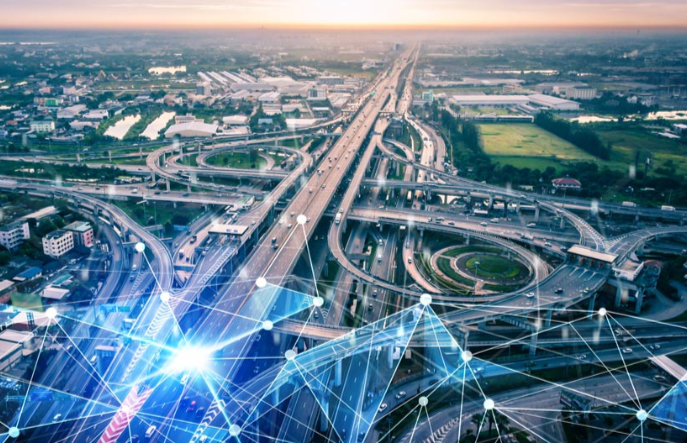Open Access Government explores Europe’s current smart mobility priorities, learning why Intelligent Transport Solutions (ITS) are key to advancing the transport sector in a sustainable and innovative way
The European Commission Department of Mobility and Transport directs EU policy in these areas, contributing to Europe’s wider agenda for 2021 to drive its biggest transformation in more than a generation. Commissioner Adina Vălean and Director-General for Transport Henrik Hololei, are responsible for developing a comprehensive strategy for sustainable and smart mobility, ensuring a transport sector fit for a clean, digital and modern economy.
One way to do this is through Intelligent Transport Systems (ITS), which are vital to both increasing safety and tackling Europe’s growing emission and congestion problems. These transport systems can consist of anything that uses information and communication technologies, to applications and services including journey planners, travel information services, intelligent traffic lights, real-time traffic information, traffic management as well as vehicle safety applications such as the automatic 112 call and advanced cruise control.
ITS can make transport safer, more efficient and more sustainable, by applying various information and communication technologies to all modes of passenger and freight transport. Moreover, the integration of existing technologies can create new innovative services and are key to supporting jobs and growth within the transport sector. However, to ensure an effective roll-out, ITS needs to be coherent and properly coordinated across the EU.
Adina Vălean, Commissioner for Transport, stated in February 2021 that “EU partnerships will have a central role in driving the twin green and digital transition for the mobility and transport sector. To make our ambitions come true, we need to develop disruptive technologies bringing zero-emission vessels and aircraft to the market, we need to develop and deploy cooperative, connected and automated mobility, and we need to enable more efficient and modern traffic management.”
Strategic Traffic Management
Traffic management provides guidance on the conditions of road networks. It detects often unforeseeable incidents and emergencies, implements response strategies to ensure safe and efficient use of the road network and optimises the existing infrastructure, often across borders. In Europe’s 2021 ‘Sustainable and Smart Mobility Strategy – putting European transport on track for the Future’, it is stated that “to create a truly smart transport system, efficient capacity allocation and traffic management must also be addressed to avoid a capacity crunch and reduce CO2 emissions.”
The current instrument of strategic traffic management in Europe is a traffic management plan. This is a pre-defined set of temporary measures and procedures in response to a specific situation. At present, such plans are used all over Europe, many of them on a regional level, some on national or cross-border levels.
On the trans-European transport network all major border crossings should have adequate traffic management plans in operation. Equipping critical road sections and accident black spots (e.g., tunnels, bridges, mountain passes, large congested areas) with adequate ITS and providing ITS services at locations and areas on critical road segments will lead to quick wins in terms of safety and road efficiency.
Another important role of traffic management is the smooth operation of urban and interurban interfaces and links between the different transport modes such as road and public transport. The roll-out of the European Rail Traffic Management System (ERTMS) and the Single European Sky remains a priority for the Commission and for Next Generation EU: investments in its deployment count fully for the digital spending targets and substantially towards the climate spending targets. Further efforts to develop train automation as well as air traffic management (ATM) systems are needed going forward.
The Intelligent Transport Systems Directive
The European Commission is working with Member States, industry and public authorities to find common solutions to many different challenges in the transport sector. In September 2020, the Commission announced an upcoming review of the Directive on Intelligent Transport Systems. There have since been two public workshops in 2021 discussing this ongoing impact assessment. Some areas identified to improve upon are:
- Revision of current specification for EU-wide real-time traffic information services.
- Recharging/refuelling points.
- Access to vehicle data for road operation purposes.
In the coming years, the digitalisation of transport in general and ITS, in particular, are expected to accelerate. As part of the Digital Single Market Strategy, the European Commission aims to make better use of ITS solutions to achieve a more efficient management of the transport network for passengers and business.
The European Commission also works to lay the foundation for the next generation of ITS solutions, through the deployment of Cooperative-ITS, paving the way for automation in the transport sector. C-ITS are systems that allow effective data exchange through wireless technologies so that vehicles can connect with each other, with the road infrastructure and with other road users.
In 2021 and beyond the Commission will explore options to further support safe, smart and sustainable road transport operations. As stated in the Sustainable and Smart Mobility Strategy, “The EU needs to take full advantage of smart digital solutions and intelligent transport systems (ITS).” Connected and automated systems have enormous potential to fundamentally improve the functioning of the whole transport system and contribute to sustainability and safety goals. Actions will focus on supporting the integration of transport modes into a functioning multimodal system. For example, preparing drafts of roadworthiness inspection methods and carrying out other specific road safety tasks, as well as collecting relevant data. It could also accomplish road transport-specific tasks in the face of major disruptions such as the COVID-19 pandemic, where emergency measures and solutions such as Green Lanes42 have proved extremely valuable.











